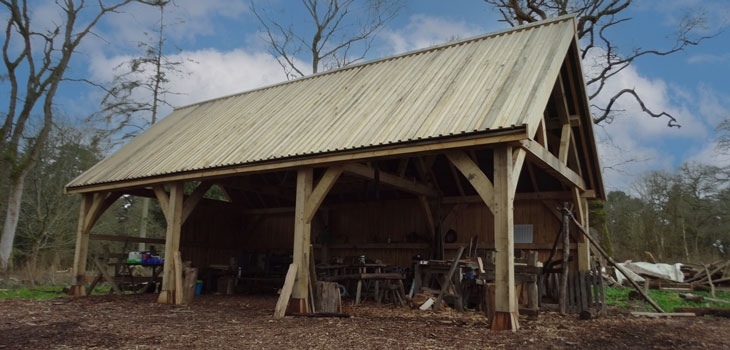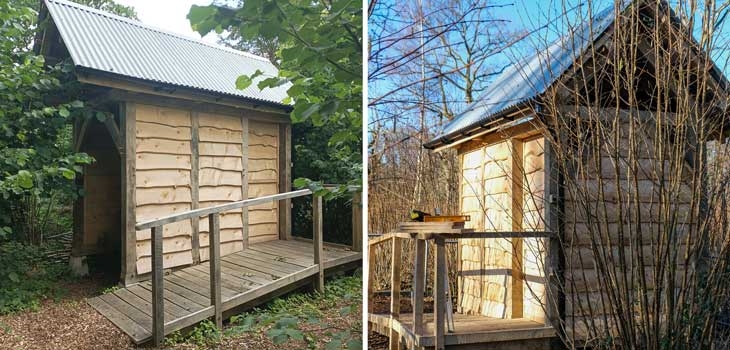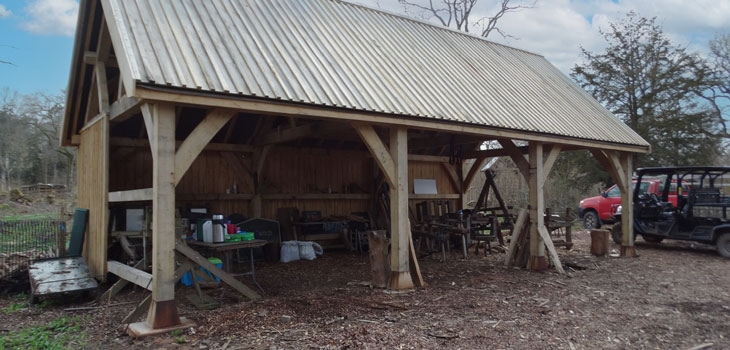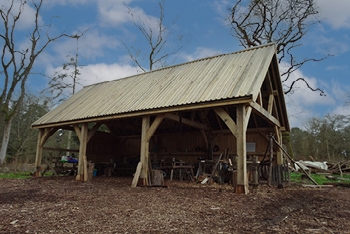Coppicing: A New Shelter
Earlier this year, the Coppice Regeneration Project saw the completion of a purpose-built shelter for the Coppice compound at Westonbirt Arboretum, thanks to funding from The Friends through the continued support of members and donors. We would also like to thank The D’Oyly Carte Charitable Trust and supporters who gave directly to the Coppice Shelter appeal. The building is a stunning piece of craftsmanship befitting of The National Arboretum which has a historic tradition of coppicing in Silk Wood, with records dating back to 1292. Read on to find out more about this project…
This structure has been built almost entirely from Westonbirt-sourced timber and milled locally. This provides the basic and necessary facilities that allow the coppicers to use the site all year around even in adverse weather conditions. The majority of coppicing work takes place in late winter and early spring and so having an undercover working area where tools and timber can be safely stored is imperative. Previously, the coppicers have used a variety of ill-suiting structures to provide some cover from the elements.

This dedicated, sheltered area for the Westonbirt coppicers allows them to safely store tools, equipment and includes a drying area for material to be charcoaled (which available for visitors to buy during the summer months). The shelter also provides the coppicers with the necessary facilities to carry out the Coppice Management Plan for Silk Wood. Since 2018, an impressive 25 acres (of 45) are now in various stages of restoration.
In addition to supporting the coppicers in their daily work, this large-scale restoration will help with sharing, teaching and raising awareness of this heritage craft.
Compost toilet
Working in the woods all day isn’t like your typical office set up and unfortunately, the coppicers have been without adequate facilities for some time. This composting toilet will provide much-needed privacy and ease of access for the coppicers, volunteers and groups who regularly visit and spend the day working in the coupes. In addition to having minimal impact on the surrounding woodland.

Coppicers capacity building
The coppicers have been directly involved in sourcing and providing the timber for the construction and have been heavily involved in the design and build of the shelter and toilet structures. This has given the coppicers the opportunity to learn new skills, diversify their income streams and be directly involved in the construction of their new facilities.
Woodland regeneration
We hope that we will begin to see changes to the coppiced woodland over the course of the next few years as the coppicers continue to gradually reclaim and regenerate approximately 45 hectares of coupes.
Westonbirt has a 7-year rotation for coppiced areas, that allows an influx of new woodland plant species to grow - such as the nationally rare Spreading Bellflower which has been spotted in low numbers within Silk Wood. We expect to record much higher rates of biodiversity as new and more species of insects, birds, bats and mammals move in.

With the future looking bright for coppicing at Westonbirt we’re looking forward to sharing more updates about the coppicer’s work in the future.
Thank you for your continued support and making these kinds of projects possible at Westonbirt Arboretum.
Find out more about coppicing, a traditional forestry practice, here...
